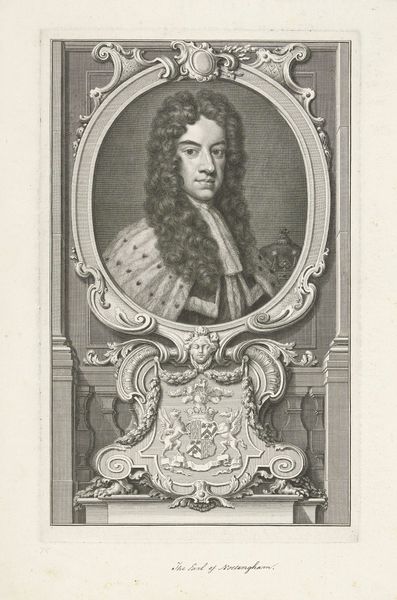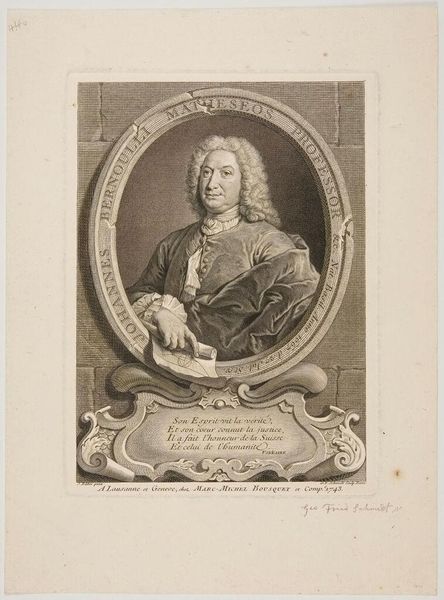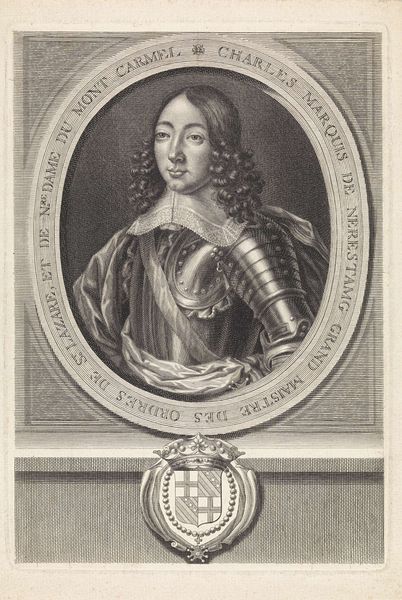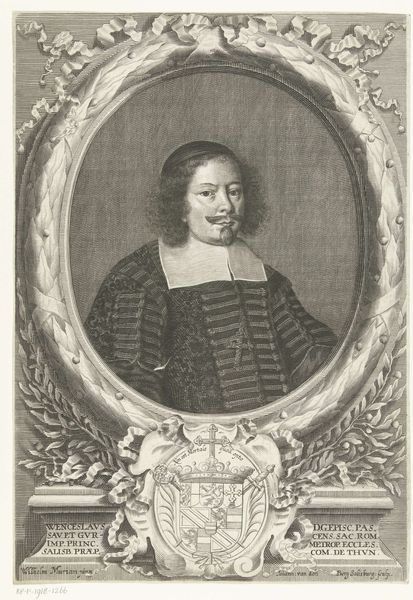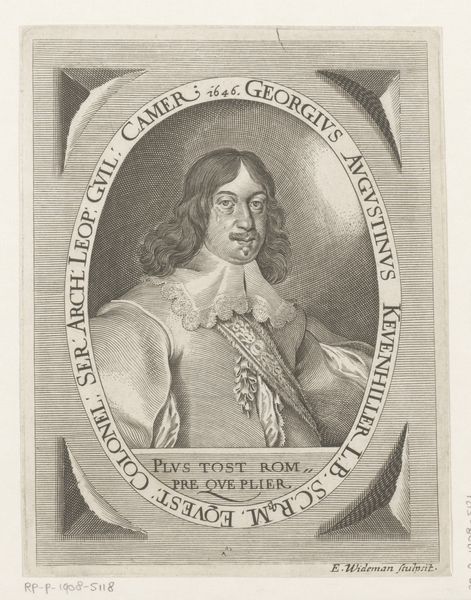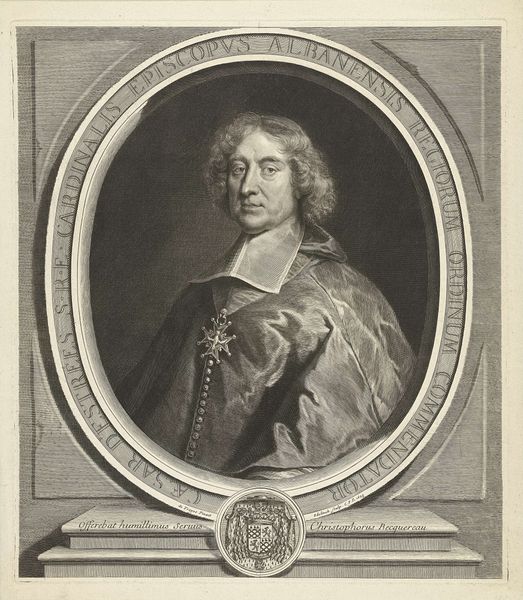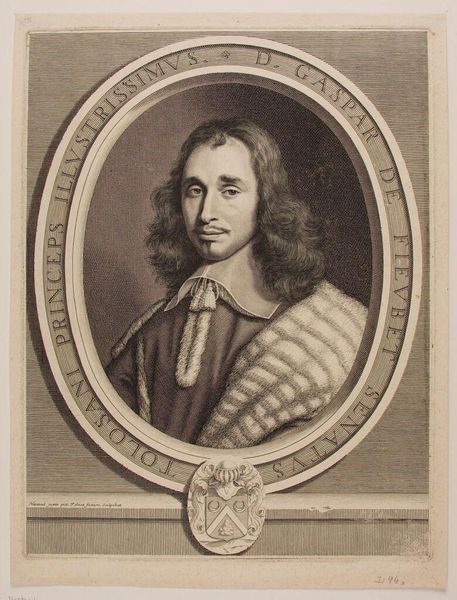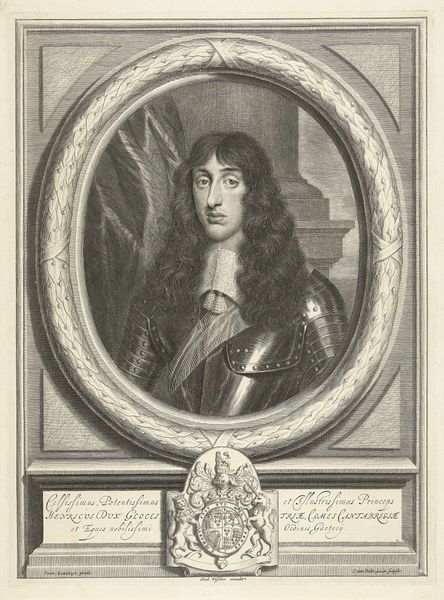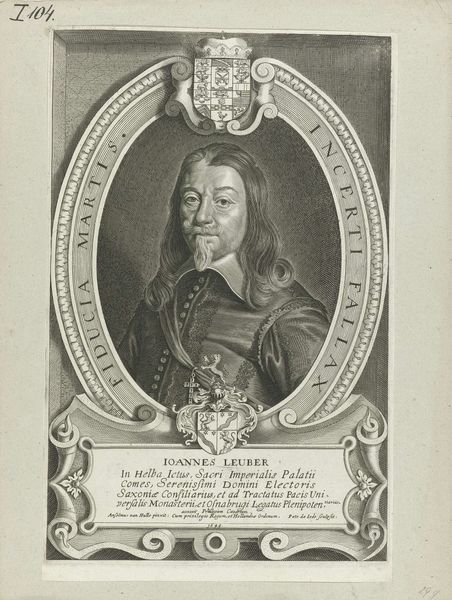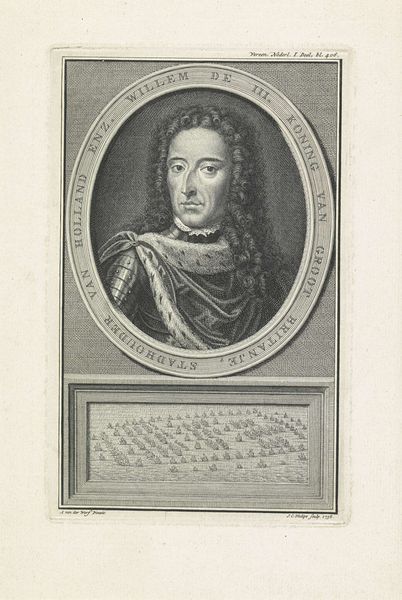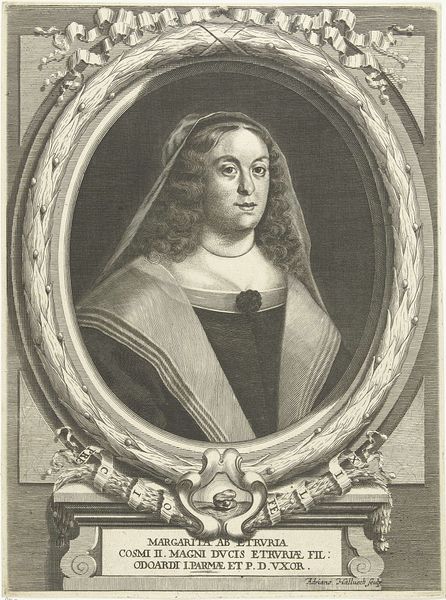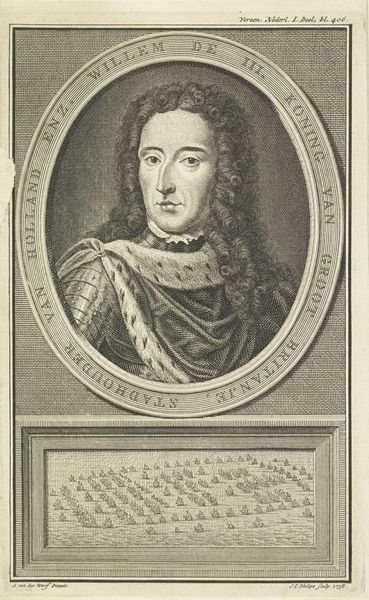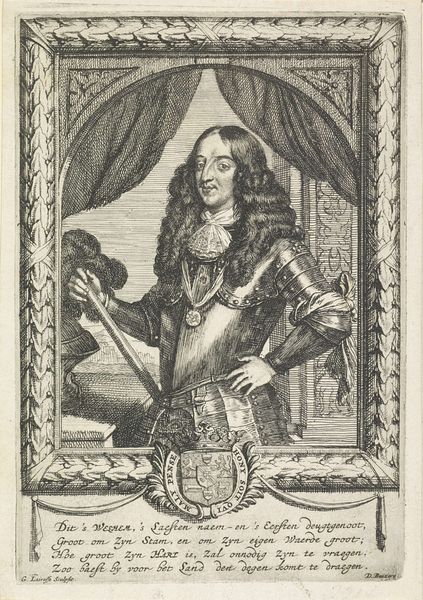
print, engraving
#
portrait
#
baroque
# print
#
old engraving style
#
history-painting
#
engraving
Dimensions: height 498 mm, width 392 mm
Copyright: Rijks Museum: Open Domain
Curator: Here we have an engraving from 1671 by Joannes van de Berg. It's entitled "Portret van Albert Sigismund van Beieren, prinsbisschop van Regensburg," or "Portrait of Albert Sigismund of Bavaria, Prince-Bishop of Regensburg." My first impression is how precisely rendered every detail seems, especially within the ornamentation. Editor: Indeed. Look at the way the artist utilizes the engraving technique to bring texture and life to the robes of Albert Sigismund. There's real attention here not just to representation but to the materiality of power. This connects with how ecclesiastical garments are crafted and utilized. Curator: Absolutely, and understanding Albert Sigismund's context is crucial here. He was a significant political figure, embodying the complex intersection of religious and secular authority within the Holy Roman Empire. The portrait, then, isn't just about individual likeness, but the social and political power structure of which he was a part. He belonged to the Wittelsbach dynasty which controlled a significant portion of Bavaria for many centuries. Editor: Exactly! Notice the dedication along the oval’s outer rim. It reads from "Albertus Sigismundus," enumerating his territories from Bavaria, through Friesing, to Regensburg. These weren't simply titles, they were very much produced through physical territories with real-world resource control. Engravings, by nature, make the powerful reproducible, which itself reinforces this established order. The labor and production methods, the control of printed knowledge… Curator: The floral embellishments within the border contrast beautifully with the sharp lettering and convey an image of both luxury and cultivation. This was important, not just for someone in his position, but generally across art patronage at the time. Art served as a visible language of diplomacy, alliance building, and familial influence. The symbolic richness reinforces status through displaying family heraldry and allusions to virtues and moral concepts that reinforce Albert Sigismund’s suitability to leadership roles. Editor: And speaking of emblems, the cross, the coat-of-arms… Each is carefully placed, methodically produced, designed to send messages about ownership, legacy, and lineage through reproducible, affordable means. Van de Berg as an engraver, is himself deeply embedded in these systems of power by simply enacting them in reproducible print form. The artist becomes complicit, so to speak, but there lies the value. Curator: So, through both style and function, the work illuminates the cultural politics of its era, linking individual portraiture with a vast network of political power, material expression, and social significance. Editor: This portrait helps us realize that art isn’t made in a vacuum. Materials, modes of production, context... all reveal the broader forces shaping art and, more importantly, those the art shapes.
Comments
No comments
Be the first to comment and join the conversation on the ultimate creative platform.
